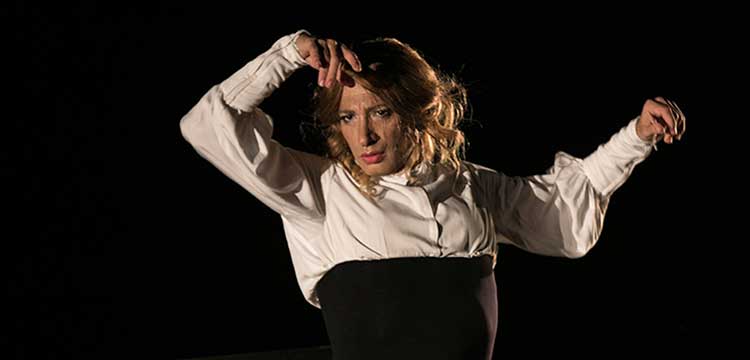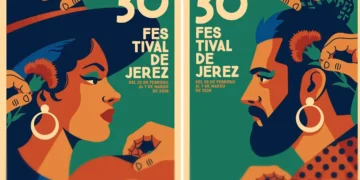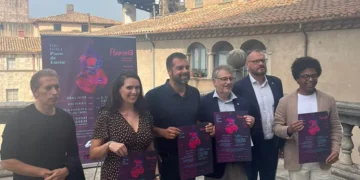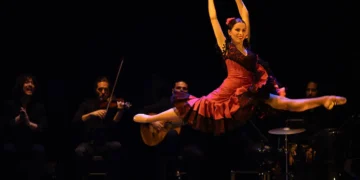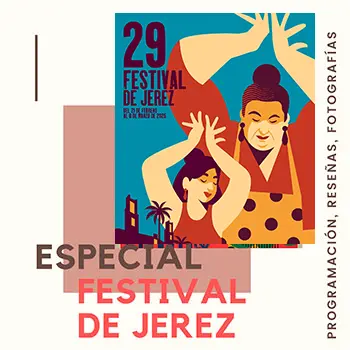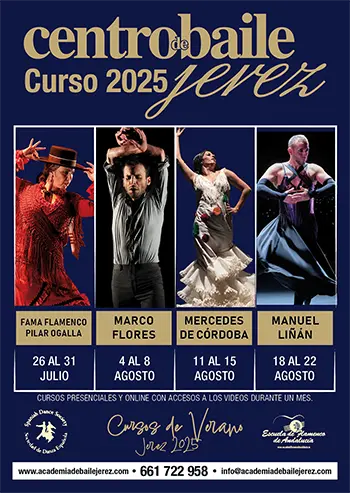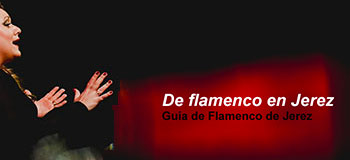ISRAEL GALVÁN – EL AMOR BRUJO (photos / video / spanish review)
Teatro Villamarta – Special Festival de Jerez
Silvia Cruz Lapeña
In this version of “El Amor Brujo” there’s no corps de ballet, and it has the feel of interpretations from silent film. “Mario Maya ran a lot in his” joked Israel Galván during the press conference, and perhaps that’s why Eduarda de los Reyes, made up to look like a female version of the dancer, performs nearly the entire work seated in a chair. “I dance to change my way of dancing” said the man from Seville, and he searches for himself to such an extent that he dresses up as a woman, something which obliges him to move in a different way.
In this work there are moments in which Galván just looks like a boy dressed as a girl, but very often he appears to be a woman using a variety of prosthetic and orthopedic devices. In those mechanical repetitive moments, so far from human, is the ominous shading, more than the tragic one Galván gave his “Amor Brujo”. The hand, wrist and abdominal exercises carried out by Israel / Eduarda are worth a prize, although it’s unlikely this will happen at any flamenco festival.
Musically, this “Amor Brujo” is, like the dancing, fragmented. The music, interpreted by pianist Alejandro Rojas-Marcos, follows the sheet music, but in segments. “I am the sea in which you sink” sings David Lagos in the “Danza del Juego del Amor”, a piece Galván ends with the airs of a histrionic actress and a final scream, well-tuned and pertinent.
Eduarda / Israel also throws himself to the flow to dance resting on his buttocks, thighs and ankles, and although you might think you didn’t see it, another of the dancer’s acrobatic tricks, Galván’s rhythmic capacity achieves the opposite effect. Israel already danced bulerías descending stairs while seated in the debut of “La Fiesta”, but floor choreography was also recently done by Rocío Molina in “Caída del Cielo” and Patricia Guerrero in “Distopía”, as if flamenco dancers had just discovered an ally in horizontal moves that give a powerful result. Of course one must have the talent of these cited artists.
The original work lasts 25 minutes, which is why the trio of artists created a second part in which phrases and melodies from “El Amor Brujo” alternate with the recorded voices of Pastora and Chacón, accompanied by the voice of Lagos, so precise, so well-tuned, so wise, also singing pieces of Cádiz tangos, bits of alegrías and whatever else he feels like. With them, Eduarda / Israel carries out pieces of dances in which he shows his command of the stage. He plays with theatrical shadow tricks and represents, more than a story, a mood.
And the mood of this “Amor Brujo” is more for smiles than tears. “The head of a bull and eyes of a lion, my love is far away, hear my voice!” is the verse written by María Lejárraga for Manuel de Falla, and which is sung by David while Eduarda gathers a bucketful of the fire of life, fatuous and burning it disappears. Along the way the sorcery of the original work disappears with a kiss of the two central figures, finishing less poetically but in a more practical way. That is Galván’s “Amor Brujo”, more humorous, and Lagos sings like a transistor radio, with as much good taste as Israel and Alejandro.
This version ought to be studied in dance schools, and in dramatic arts centers and, why not, for stage direction as well, because the play of lights and the creation of various atmospheres is perfect and brilliant. And as far as Galván himself…Galván is Galván, and that’s all there is to it, and it’s probably better to enjoy him than intellectualize about him. Israel, now also Eduarda, reminds me again and again of Enrique Vila-Matas, whose books are dissected to discover how much of what he writes is reality or fiction, who’s who or what they’re trying to do while he seems always to be enjoying himself.
Something similar seems to happen with Galván’s dancing, since a long time ago he’s been one of those artists who doesn’t think about the audience. There are those who simply want applause and others, we’ve seen it in this same Festival de Jerez with Rubén Olmo and David Coria, who strike a balance between what they need and what they offer. But Galván is, since long ago, an artist who only performs in order to explore himself. He dances for himself. He gets by with that premise, as happened in “La Fiesta”, the communication with the audience is at times completely broken. These are risks that must be assumed by anyone who analyzes so much, but such is not the case with this “Amor Brujo” in which Galván returns to the fact that it’s impossible to stop looking, the person who transmits that truth is none the less its for being his and his alone.
Welcome back genius. And thank you.
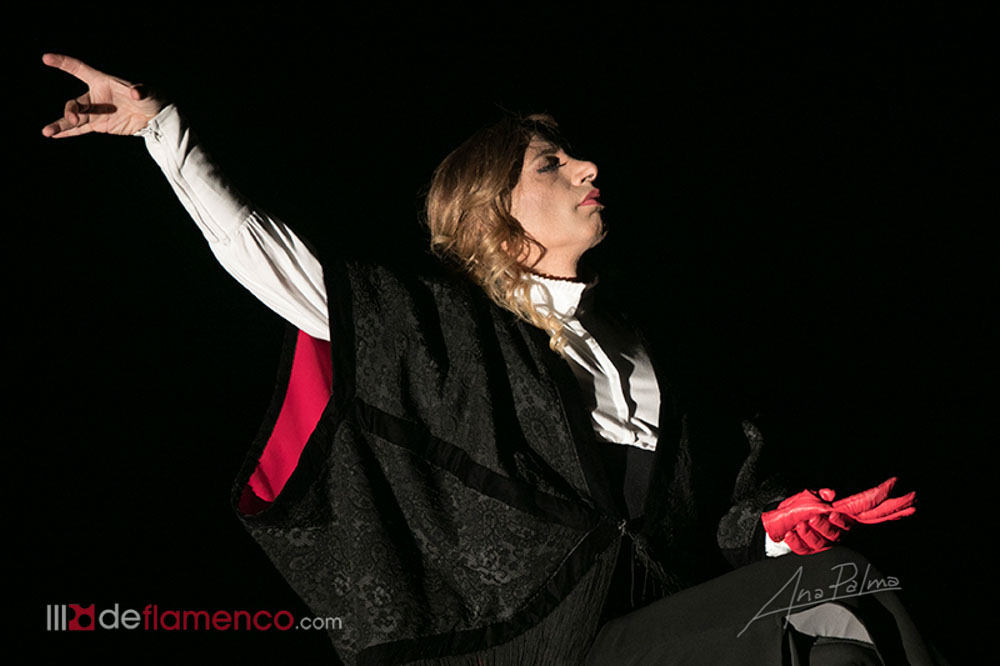
Discover more from Revista DeFlamenco.com
Subscribe to get the latest posts sent to your email.


